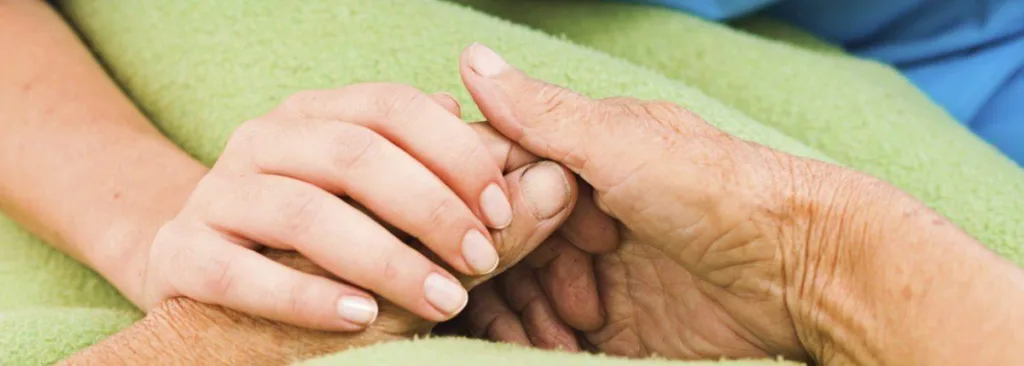Increased public support of patients' rights is driving new state laws. Legal decisions about health issues and national legislation on healthcare funding could change the way care in the U.S. is accessed and funded. To help keep readers informed, Nurse.com highlights some important healthcare policy issues for nurses to watch. Here, we explore end-of-life laws and how this legislation affects nurses' care of their patients.
More states pass, consider death with dignity laws
What's happening now: In 1997, Oregon's Death with Dignity Law went into effect, allowing physicians to prescribe -- but not administer -- lethal doses of medication for terminally ill patients who want to end their lives. Only patients may administer the medication. Washington and Vermont have since passed similar laws, and courts in Montana and New Mexico have legally allowed physician-assisted suicide for terminally ill people. This year 26 states and the District of Columbia are considering legislation on end-of-life options, according to the Death with Dignity National Center, which promotes and supports such laws. Since Oregon voters passed the Death with Dignity law, 1,327 people in the state have requested lethal prescriptions from physicians, and 859 died from ingesting those medications, according to the Oregon Health Authority website. The three most frequently mentioned end-of-life concerns by those requesting lethal prescriptions were: loss of autonomy (91.4%), decreasing ability to participate in activities that made life enjoyable (86.7%), and loss of dignity (71.4%), according to the Oregon Health Authority. How it affects nurses in their practice: After the Death with Dignity Act was passed in Oregon, nurses and physicians who believed dying patients should have a choice in ending their lives saw it as a positive option, said Susan King, MS, RN, CEN, FAAN, executive director of the Oregon Nurses Association. Those who disagreed with the law did not have to participate as long as they made sure their patients were cared for. For a physician, opting out includes declining to prescribe medication. For a hospice nurse or nurse practitioner, it may mean transferring care of a patient to someone ethically comfortable with the patient's decision, or providing care until the patient decides to take the life-ending medication, King said. Religious-affiliated organizations and others, such as the Veteran's Administration, have prohibitions from participating in the law that healthcare workers must follow. "We're now well over a decade into it and I think it's not a big issue in the state," King said. Though only physicians may prescribe the drugs by law, patients often initiate end-of-life conversations with nurses and NPs, who are in a good position to evaluate the meaning of their requests, King said. "It's spurred a lot more conversation about symptom management at the end of life." The use of hospice services has increased since the law was passed, she said, and clinicians have become more aware of the importance of palliative care in making terminally ill patients as comfortable as possible. As more states consider end-of-life option laws, nurses can expect more questions from patients and families about them, and possibly requests for "this kind of help," said Martha Turner, PhD, RN-BC, assistant director for the American Nurses Association's Center for Ethics and Human Rights. "Nurses need to have an understanding of what their state laws are," she said, so they can explain them to patients who ask about them. For instance, the Oregon law applies only to terminally ill patients with less than six months to live, with a diagnosis confirmed by two physicians. Nurses also need to reflect on their own belief systems about end-of-life options, she said. Though the ANA position statement on physician-assisted suicide "prohibits nurses' participation in assisted suicide and euthanasia," the organization's recently revised nursing code of ethics states nurses should assist patients with end-of-life planning decisions, and "provide interventions to relieve pain and other symptoms in the dying patient consistent with palliative care practice standards." When patients or families ask about ending their lives in the event of terminal illness, nurses need to listen to what they are saying about the care they are receiving and ask how that care can be improved, Turner said. Most patients do not follow up with initial requests for lethal medication once they feel their end-of-life concerns are addressed, according to the Oregon law's clinician guidelines, citing a 2002 study published in the Journal of the American Medical Association. What to watch for in the future: The time for nurses to be involved in end-of-life option laws is while they are being written rather than after they've been passed, Turner said. Nurses should make sure any physician-assisted suicide law includes strong language requiring the decision be the clear choice of a mentally competent patient, not a family member or someone who is confused, mentally ill or feeling pressured by economic or other concerns, she said, and the law should require a waiting period allowing patients to reflect on their decision. Clinicians should be able to opt out if their moral or ethical beliefs conflict with the patient's wishes, but without abandoning their patients, King said, which may mean continuing to offer comfort care or transferring care to another provider. Nurses also should advocate for other end-of-life care options, including palliative care and home hospice, which are not always covered by insurance, Turner said. Nurses should be comfortable discussing end-of-life topics such as advance directives, comfort and palliative care, resuscitation status, life-sustaining orders, foregoing nutrition and hydration and palliative sedation, making sure both they and their patients understand the terms and the range of choices for their care, she said. They should also make sure patients who are asking about end-of-life options are receiving optimal care, Turner said. To comment, email [email protected]. Helpful links: http://www.nursingworld.org/MainMenuCategories/EthicsStandards/Ethics-Position-Statements/Euthanasia-Assisted-Suicide-and-Aid-in-Dying.pdf http://www.nursingworld.org/MainMenuCategories/EthicsStandards/CodeofEthicsforNurses/Code-of-Ethics-For-Nurses.html https://www.ohsu.edu/xd/education/continuing-education/center-for-ethics/ethics-outreach/upload/Oregon-Death-with-Dignity-Act-Guidebook.pdf






